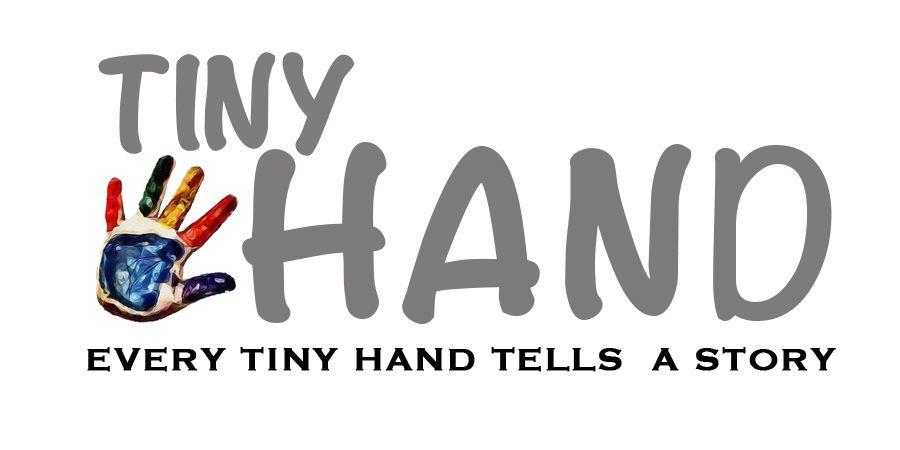The inspiring story
of Greta Thunberg
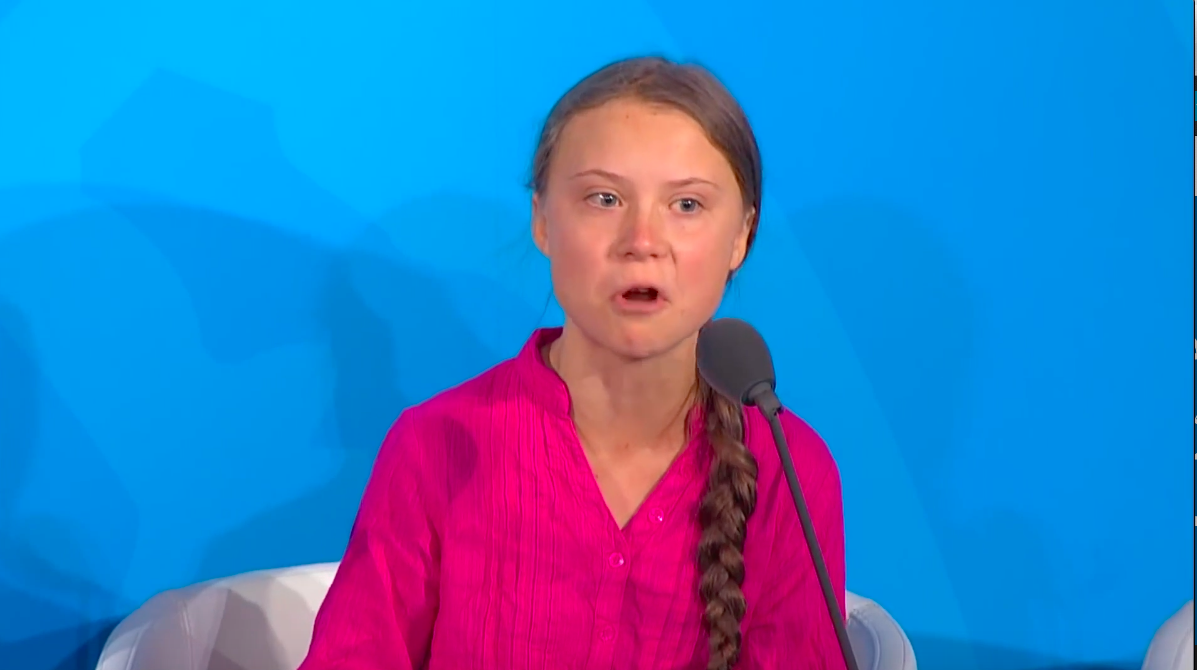
The brown hair braid is pulled over her shoulder and the look of anger on her faces disappears gradually with tears running down her cheeks.
This is a brief description of the scene that is often associated with the 16-year-old activist who is fighting to stop climate change.
She often appears warning against the catastrophic events that would affect the earth due to climate change.
Today, Greta has been chosen the Time’s Person of the Year for 2019.
Many wonder why was she specifically chosen in particular.
Let us take you on a tour into the life of the girl who in spite of her having Asperger’s syndrome, one of the autism spectrum disorders, was able to blast the world leaders and inspire millions of youth to protest on streets.
the videoclip that changed her life
She watched it when she was 11 years old
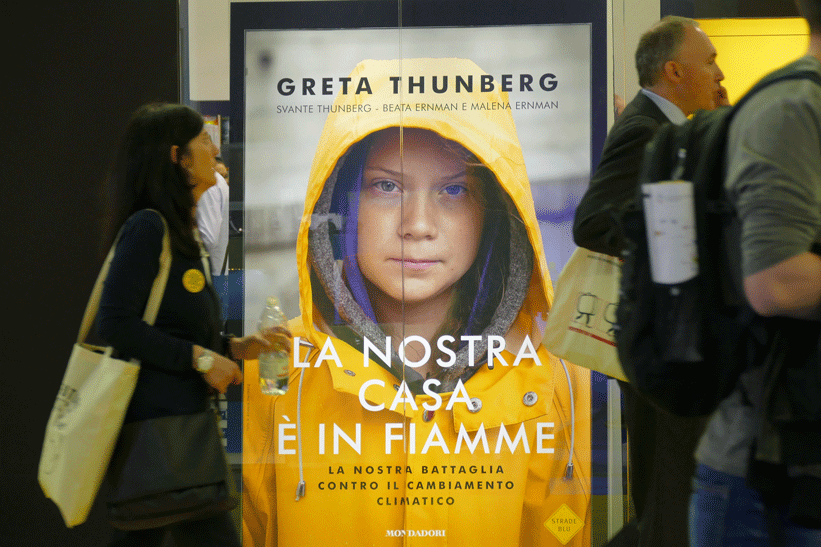
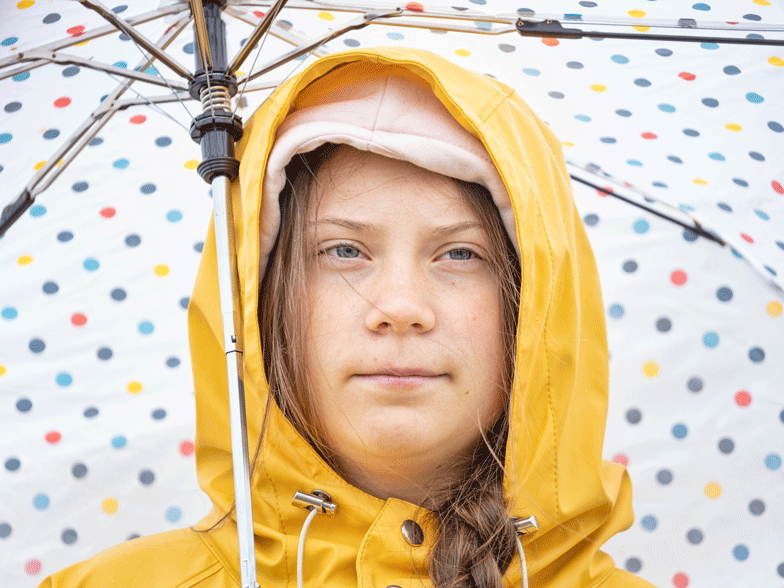
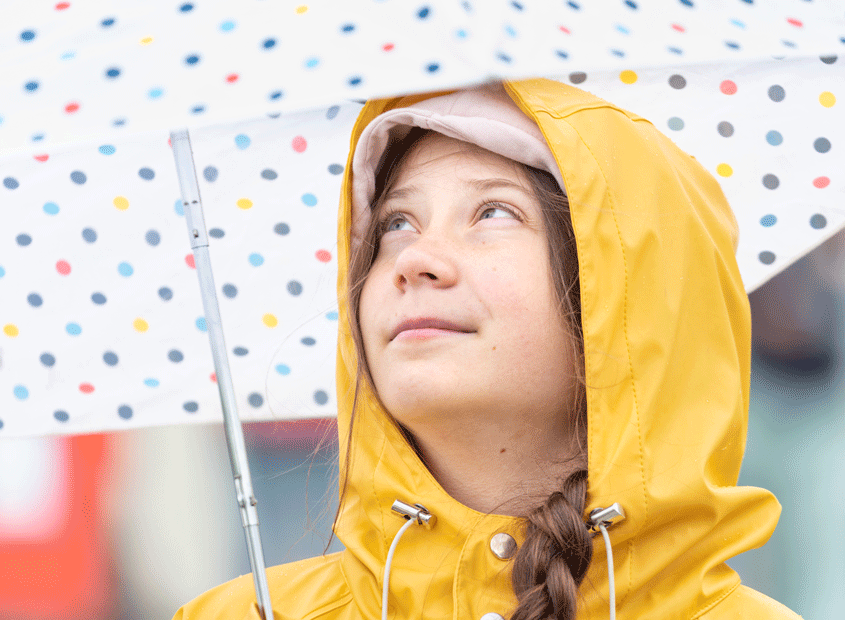
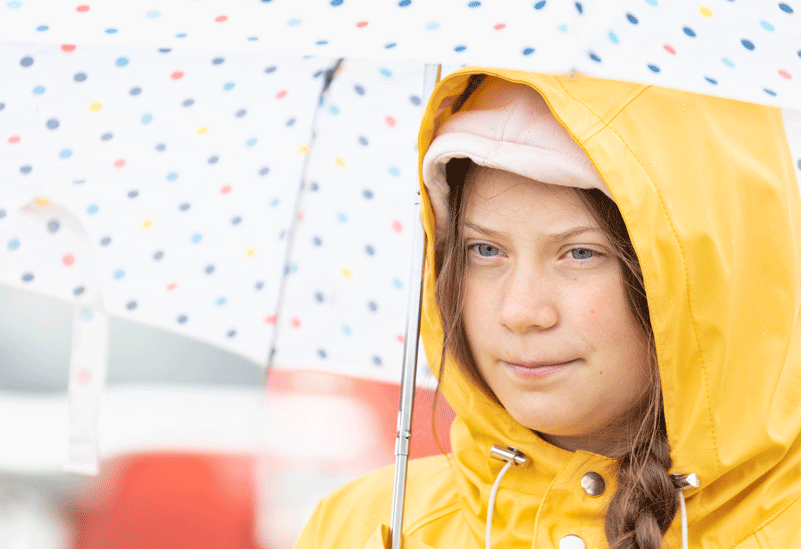
On a school day that would have passed like any other school day, Greta’s teacher at her primary school in Stockholm, the capital city of Sweden, showed her a video clip that turned her life upside down.
Greta was 11 years old when she first became aware of the consequences of climate change.
The video was about starving polar bears, extreme weather, and flooding.
Afterward, the entire class felt glum, but the class was over and the other kids were able to move on. Greta couldn’t. She began to feel extremely alone.
She fell into a deep depression. For months, she stopped speaking almost entirely, ate so little, and faced several malnutrition-related problems. Her father remembers that stage of her life as a period of “endless sadness”.
In one of her interviews, Greta recalled her confused feeling that there was such an existential threat that no one paid attention to or prioritized.
At first, Greta’s father reassured her that everything would be O.K., but as he read more about the climate crisis, he found his own words rang hollow.
“I realized that she was right and I was wrong, and I had been wrong all my life,” her father explained. In an effort to comfort their daughter, the family began changing their habits that were harmful to the environment.
For instance, they stopped eating meat, installed solar panels, began growing their own vegetables and eventually gave up flying.
“We did all these things, basically, not really to save the climate, we didn’t care much about that initially,” says her father.
“We did it to make her happy and to get her back to life.”
Slowly, Greta began to eat and talk again.
Her outrage over the climate crisis and its relation to her having Asperger’s syndrome
Greta’s Asperger’s diagnosis helped explain why she had such a powerful reaction to learning about the climate crisis.
Because she doesn’t process information in the same way other people do, she could not compartmentalize the fact that her planet was in peril.
“I see the world in black and white, and I don’t like compromising,” said Greta.
On her Asperger’s diagnosis, she told the Time, “If I were like everyone else, I would have continued on and not seen this crisis.”
She is in some ways grateful for her diagnosis; if her brain worked differently, she explained, “I wouldn’t be able to sit for hours and read things I’m interested in.”
Usually, someone with Asperger’s syndrome hates crowds and speaks straightforward, uncomplicated sentences.
However, Greta was the reason why those crowds gathered and millions took to the streets!
I see the world in black and white
I don’t like compromising!!

Greta: it’s time for the strike!
The numbers were very small in the beginning
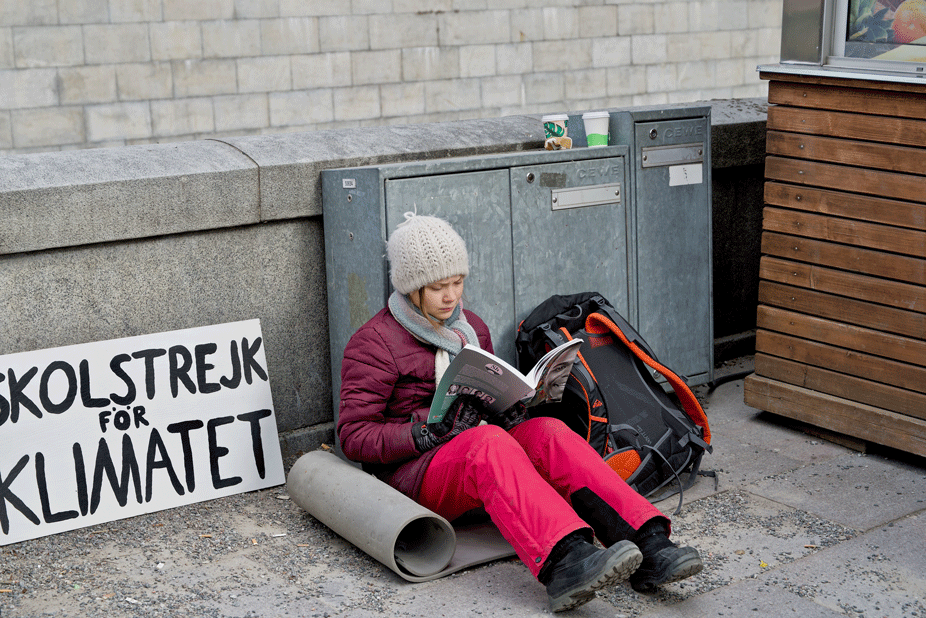
Everything started with a sign painted in black letters on a white background that read in Swedish “Skolstrejk för klimatet,” which means, “School Strike for Climate.”
At that time, Greta joined a group of climate activists who had contacted her after she wrote a newspaper article on the threats of climate change in a local Swedish newspaper.
People angry at the environmental disasters would gather every Friday in front of the Swedish Parliament along with Greta.
At that time, Greta started to distribute flyers throughout her school inviting the students to take part in the strike; she wrote on the flyers,
“My Name is Greta, I am in Ninth Grade, and I am school-striking for the climate, Since adults don’t give a damn about my future, I won’t either.”
The climate campaign launched by Greta has become very popular. Every Friday, the girl would skip her school to protest outside the Swedish Parliament and urge the government to act to cut greenhouse gas emissions.
Every Friday, Greta would protest in the same place holding the same sign. Sometimes, she was joined by some other people and sometimes she would stand alone.
She became a role model for endurance and perseverance. In the 16 months since the beginning of the protests, she has addressed heads of state at the U.N., met with the Pope, sparred with the President of the United States and inspired 4 million people to join the global climate strike on September 20, 2019, in what was the largest climate demonstration in human history.
Greta was invited to talk about her cause at the 2019 World Economic Forum in Davos, the Climate Summit in Poland, and TED talks in Stockholm. Every time her talk was emotionally
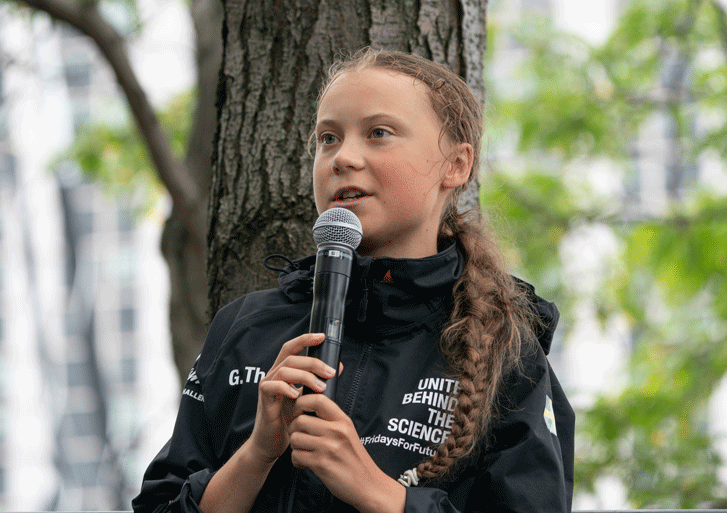
غريتا/ 16 عاماً
غريتا/ 16 عاماً
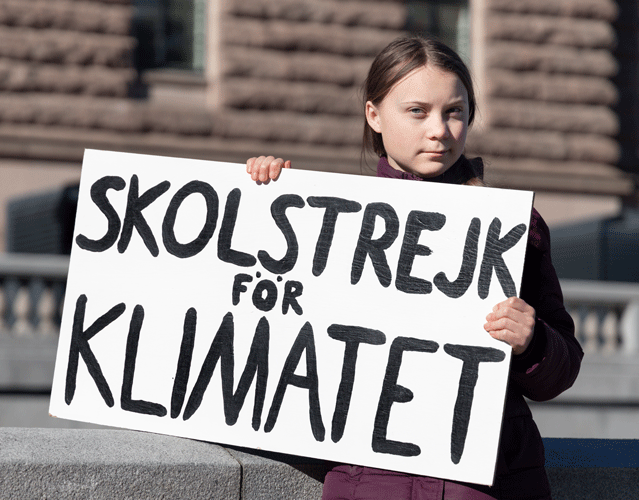
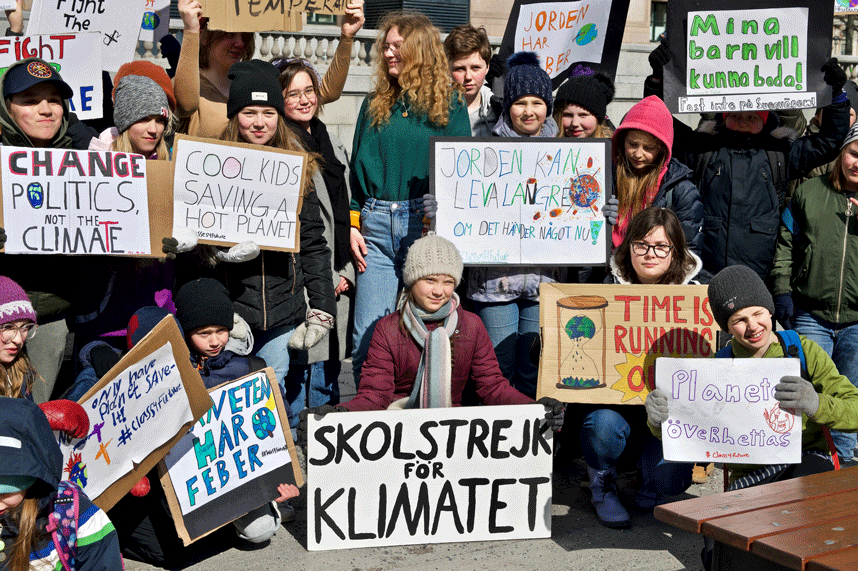
What did she say to world leaders?
“You aren’t mature enough to tell it like it is!”
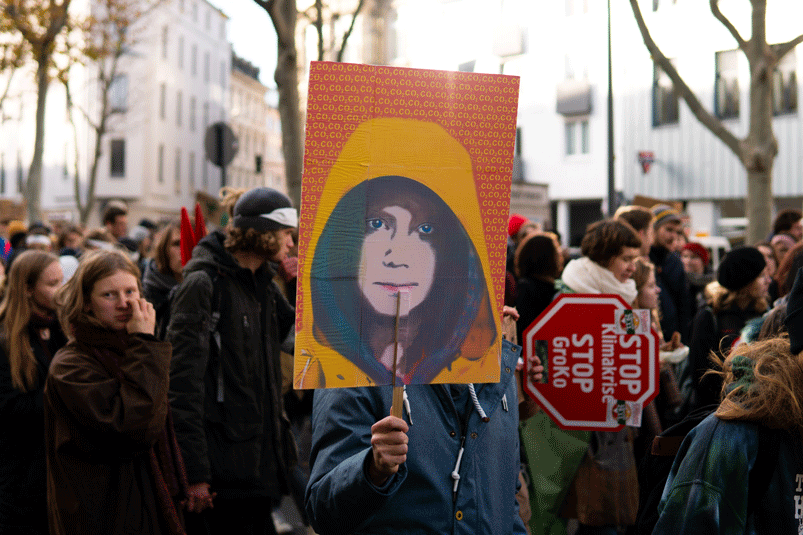
When she stood in front of the annual convention of CEOs and world leaders at the World Economic Forum in Davos, Switzerland, in January 2018, she said with great pain in her heart:
“I want you to panic. I want you to feel the fear I feel every day. And then I want you to act.”
Greta accused world leaders at last year's climate summit of failing to tackle climate change.
“You only speak of a green eternal economic growth because you are too scared of being unpopular. You only talk about moving forward with the same bad ideas that got us into this mess.
Even when the only sensible thing to do is pull the emergency brake.
You are not mature enough to tell it like it is. Even that burden you leave to us children,” she told the world leaders.
On several occasions, she talked to the adults who are unwilling to take the right action saying, “Adults keep saying we owe it to the young people to give them hope.
But I don't want your hope, I don't want you to be hopeful. I want you to panic, I want you to feel the fear I feel every day. And then I want you to act.”
Perhaps the environmental activist does not have a magic solution to climate change and rising global warming, but she succeeded in creating a global attitudinal shift, transforming millions of vague, middle-of-the-night anxieties into a worldwide movement calling for urgent change.
She has offered a moral clarion call to those who are willing to act and hurled shame on those who are not.
For decades, researchers and activists have struggled to urge world leaders to take climate threats seriously, but this year, this girl, Greta, has caught their attention.
She is an ordinary teenage girl who, in summoning the courage to speak truth to power, became the icon of a generation.
By clarifying an abstract danger with piercing outrage, she became the most compelling voice on the most important issue facing the planet.
However, her constant presence has become a sign of youth’s anger worldwide according to a survey conducted by Amnesty International last December.
You say you love your children above all else, and yet you are stealing their future in front of their very eyes. Greta
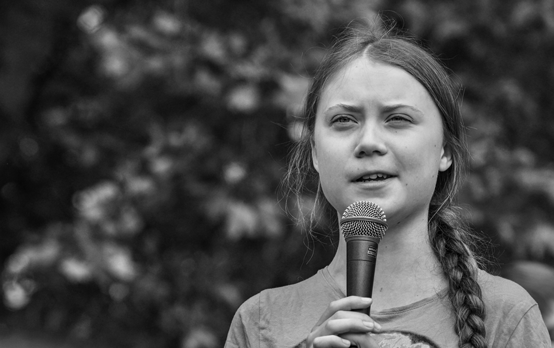
Why should we all feel panic exactly like Greta?
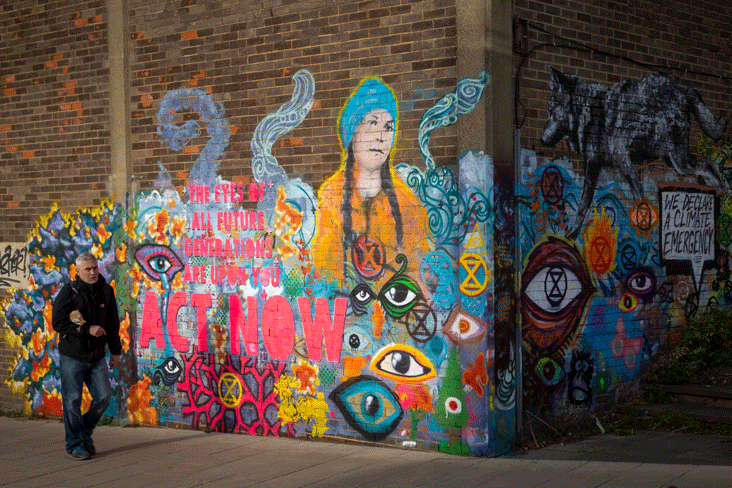
The United Nations is currently hosting a climate summit, at which world leaders will discuss ways to implement the 2015 Paris Climate Agreement, which aimed to reduce the emission of gases that contribute to the catastrophic global warming.
The world leaders must agree to take a transformative measure to reduce gas emissions because global warming will reach 1.5°.
Scientists warn that this will expose an additional 350 million people to drought and force nearly 120 million people to be living in extreme poverty by 2030.
For every part of the rising temperature, these problems will get worse.
If this happens, we will witness sea level rise, which in turn will cause floods and threaten to erase whole islands and coastal cities.
Such changes in the life conditions of natural environments cause death and disease for some types of plants and animals, the mass migration of animals, and the rise of the numbers of climate refugees. In addition, climate changes result in extreme weather events such as hurricanes, droughts, rain, and snow.
Therefore, Greta is calling for something important and dangerous. However, her outcry has irritated a number of world leaders, including the President of the United States of America, Donald Trump, whose country withdrew from the climate agreement.
Greta provoked Trump’s anger and some threatened to kill her
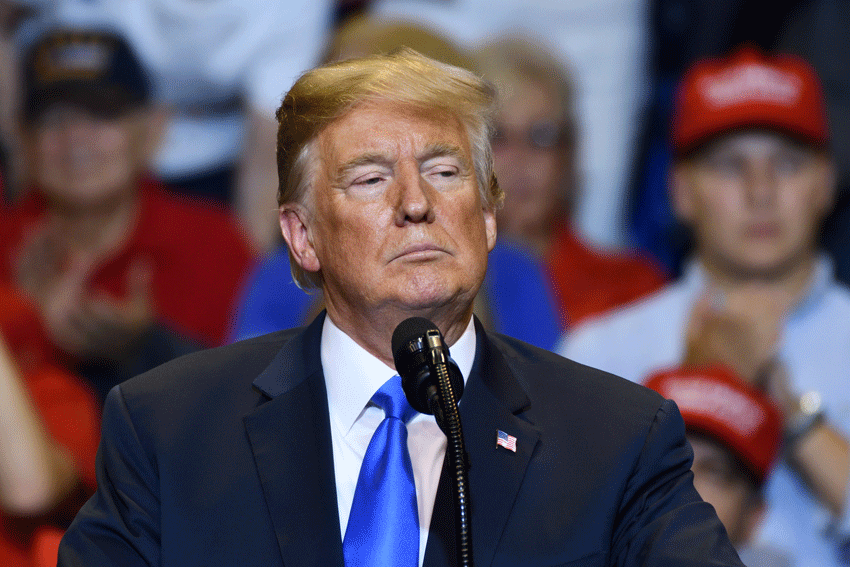
“I have changed from an invisible girl to a global activist,” she briefly described herself in one of her interviews with The New York Times.
However, what really happened was much more than this; the girl has become the face of the youth-led climate movement that has inspired millions of other children in 100 nations at least to call for climate change.
However, the movement was not welcomed by many world politicians, including the U.S. president who withdrew from the climate agreement.
“She seems like a very happy young girl looking forward to a bright and wonderful future,” Trump wrote of Greta in one of his tweets.
Maxim Bernier, the leader of the far-right People's Party in Canada, described Greta as “clearly mentally unstable.”
Greta and her family received death threats and she is protected by police guards very often, especially during her travels.
Nevertheless, more than 60 countries said they would eliminate their carbon footprints by 2050.
Voters in Germany, Denmark, the Netherlands, Austria, and Sweden now list climate change as their top priority.
Green parties gained seats in the European Parliament from Germany, Austria, the Netherlands and more. Those victories helped push the new European Commission president to promise “a Green Deal” for Europe. In the U.S., a recent Washington Post poll found that more than three-quarters of Americans now consider climate change a “crisis” or a “major problem.”
“We can’t just continue living as if there was no tomorrow, because there is a tomorrow,” she told the Time magazine.
It is a simple fact presented to the world by a small girl who has become the first youngest ever Time’s Person of the Year for 2019 since the magazine set the tradition in 1927.

